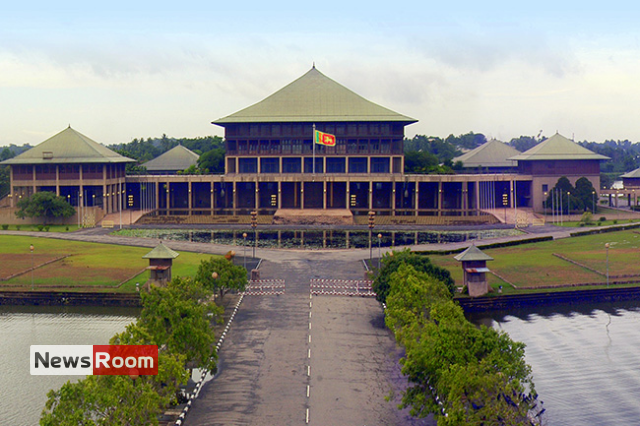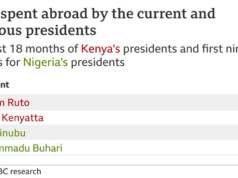By DEVENDRA SAKSENA
Currently, the words ‘debt trap’ have a distinctly Chinese connotation. According to the Western press, the Chinese, as part of their geostrategy, have inveigled poor nations into borrowing huge amounts from them for fanciful infrastructural projects; almost all borrower countries are in dire economic straits, because most such projects are lying incomplete, or not yielding anticipated returns. Referring to Chinese lending as ‘debt-trap diplomacy,’ Western leaders would have us believe that China deliberately lends money to poor countries on overly challenging terms, so that loans could not be repaid, forcing borrowers to accept eco- nomic or political concessions. Western nations blame China for using ‘debt-trap diplomacy’ to promote Chinese geopolitical interests in Asia and Africa.
Exact data about Chinese lending is not in the public do- main, as China does not report its international lending, and agreements with debtor countries prohibit disclosure about Chinese loans. In many cases, Chinese companies advance loans to state-owned companies of the borrower nation, which do not figure in the borrower country’s budget. Also, China is not a member of the Paris Club or the OECD, so it is under no obligation to reveal details about the monies lent by it. But today, China is the world’s largest official creditor ~ surpassing traditional lenders such as the World Bank, the IMF, or all OECD creditor governments combined. Chinese credit is widespread.
According to Aid Data, China has financed 13,427 development projects, worth US$843 billion dollars in 165 countries, while the Harvard Business Review has estimated that the Chinese Government and State- owned companies have lent about US$1.5 trillion in direct loans, and trade credits, to more than 150 countries. For most poor countries, Chinese lending is substantial vis-à-vis their GDP. According to a study conducted by the Harvard Business Review: “For the 50 main developing country recipients, we estimate that the average stock of debt owed to China has increased from less than 1 percent of debtor country GDP in 2005 to more than 15 per cent in 2017.
A dozen of these countries owe debt of at least 20 percent of their nominal GDP to China (Djibouti, Tonga, Maldives, the Republic of the Congo, Kyrgyzstan, Cambodia, Niger, Laos, Zambia, Samoa, Vanuatu, and Mongolia).” Chinese lending gained impetus in 2013, when President Xi Jinping announced the Belt and Road Initiative (BRI), a global infrastructure development and investment strategy, under which China financed huge infrastructural projects like ports, railways, roadways, bridges, dams, and power stations in the poor developing countries of Asia and Africa ~ though BRI also includes 17 European Union countries and 22 countries in the Caribbean and South America. Repaying Chinese loans is not easy because unlike other official lenders such as the World Bank that provide finance at concessional, below-market interest rates, and longer tenures, China tends to lend at market terms, at interest rates close to those prevailing in private capital markets.
Additionally, the Chinese insist on collateral, meaning that debt repayments are secured by assets or future revenues. Western leaders cite the example of two of India’s neighbours, Sri Lanka and Pakistan, to drive home the dangers of taking loans from China. Initially, Sri Lanka got huge loans from Chinese government banks to build infrastructure like airports, sea- ports and bridges. However, revenue generated from Chinese-funded projects was insufficient to repay the Chinese loans. The largest such projects, Hambantota Harbour and Mattala Rajapaksa International Airport (MRIA), are case studies in the menace of easy Chinese loans; MRIA is lying unused while Hambantota Har- bour has been taken over by the Chinese, on a ninety-nine years lease, because Chinese debt could not be repaid. The Western press attributes Sri Lanka’s recent economic crisis, which saw day-long power cuts, soaring prices of food and other essentials, as inflation reaching twenty-five per cent, solely to problems created by Chinese loans. Sadly, for Sri Lanka, the economic meltdown metamorphosed into a political crisis. Following massive public protests, the Government had to resign. These twin crises brought Sri Lanka to the verge of sovereign default; only generous interventions by India and the IMF have kept the Sri Lankan economy afloat. A similar script is playing out in Pakistan, which had borrowed heavily from China, for its BRI project. However, Chinese ‘debt- trap diplomacy’ is not the sole reason for the economic ruin of Sri Lanka; Chinese loans accounted for only 10.8 percent of Sri Lanka’s debt burden, the rest comprising International Sovereign Bonds (36.4 per cent), Asian Development Bank (14.3 per cent), and Japan (10.9 per cent). Also, the Lankan economy was already on the verge of collapse because of the myriad unwise and populist policies of the Rajapaksa government. The failed projects, Hambantota Harbour and Mattala Rajapaksa International Airport (MRIA), were vanity projects of the Rajapaksa family, located in their backyard, at unsuitable venues; feasibility study of both projects had been conducted, not by Chinese, but by European companies. Finally, no planner could have factored in the humongous corruption, which made both projects unviable. Contrarily, China and the beneficiaries of its loans do not view Chinese loans as ‘debt-trap diplomacy’; Chinese see themselves as daring entrepreneurs, identifying economic opportunity in pro- viding loans to failing countries, and generating enormous profits from it ~ both in terms of money and resources. Many countries that have a colossal Chinese debt burden consider China as their closest friend. Acknowledging China as their prime growth catalyst, Kenyan and Comoros’ leaders hold that Africa’s only trap is ‘Poverty and Underdevelopment.’
Undoubtedly, China is the lender of last resort; unlike the World Bank and IMF, China does not insist that borrowing countries change their economic policies; it also does not check the credit history of its borrowers. Like Shylock, it could be that China is more sinned against than sinning. Since time immemorial, kings had borrowed money to secure borders, or to launch foreign military campaigns, but by the end of the twentieth century, countries were borrowing not to prosecute wars or to overcome crises but on revenue account ~ for pensions, health care, and other social services i.e., ‘revdis’ in current political parlance. The Latin American debt crisis of the 1970s and 80s, primarily affecting Brazil, Argentina and Mexico, unfolded with these countries contracting loans for development ~ mainly infrastructure projects. Slowly, borrowings, mostly from private banks, ballooned to fifty per cent of the region’s GDP. Mexico borrowed against future oil revenues; when the price of oil collapsed, so did the Mexican economy. Other Latin American countries’ economies collapsed for a diametrically opposite reason; when oil prices skyrocketed, interest rates increased, and debts became unsustainable. Ultimately, loans had to be restructured with help from the World Bank and IMF.
Currently, soaring Indian sovereign debt is causing concern to the IMF. As on 31 March 2023, the Central Government owed Rs.152.61 lakh crores amounting to 57 percent of GDP, while State Governments owed around Rs.75 lakh crore, which is 28 percent of GDP. According to Budget Estimates, the Central Government debt, which has more than doubled in the last ten years, is projected to increase to Rs.169.47 lakh crore by 31 March 2024. Worryingly, the IMF has forecast that public debt will exceed India’s GDP in the medium term, at a time when considerable investment will be required to improve resilience to climate stresses and natural disasters.
The IMF has suggested “ambitious” fiscal consolidation over the medium term, in order to curb India’s public debt. During the course of Article IV discussions with the IMF, Indian officials rightly pointed out that foreign debt was barely three percent of the public debt, so a ‘debt-trap’ situation was not in the making. Moreover, given the high Indian GDP growth rate, debt to GDP ratio had not increased significantly over the years. Yet, ill-effects of profligate spending, resulting in high indebtedness, are becoming visible. Deficit financing, used to finance the Government’s ambitious infrastructure development programmes and ‘revdis’ like Kisan Sanman Nidhi, has risen to Rs.17.86 lakh crore, or 5.9 per cent of the GDP. Also, during FY 2023-24, out of total expenditure of Rs.38.50 lakh crore, approximately Rs.11 lakh crores will go towards interest payments. Thus, a vicious cycle is created; the Government garners resources by deficit financing, which increases the interest burden, leading to more deficit financing. Foreign rating agencies hesitate to improve our ranking, despite our strong fundamentals, only because of weak financial management and high debt. Ultimately, we have to realise that the Charvaka philosophy of drinking ghee from borrowed funds, is totally inappropriate for modern economic management.








